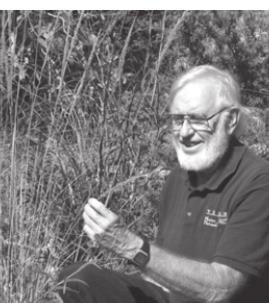A Life On Our Planet, by David Attenborough
Back in April I wrote a column titled “A lifetime Involved with Nature” about a TV series documenting David Attenborough’s life as a worldwide nature explorer and film maker and things he could teach us all. I am repeating much of that column below to introduce Attenborough to everyone who doesn’t know about him.
I am doing this because he has since written a book, published this past spring, entitled “A Life on Our Planet.” He is 94 and has a unique world-wide view of the condition of our planet, what has happened to it during the 70+ years he has been observing it, and what we need to do to protect it. It is, in my view, an absolutely outstanding and important book, unlike any other I have read. I expect to write several future columns about Attenborough’s writings.
Regular readers of this column know that I generally only write about topics related to the Hill Country or Edwards Plateau, both because this is the area I know best and because it is the area I love the most. But the “Lifetime Involved with Nature” series of TV specials on PBS by and about David Attenborough gave me a different perspective.
I have been an Attenborough fan all my life. He started making nature films in the 1950s, before I ever even had a TV! I have watched his nature films from literally pole to pole and all around the equator and marveled at the experiences he has had over all those years.
The latest three-hour TV series details some of the early experiences he had in filming nature around the world, how the world and our technology have changed over his lifetime and some of his insights into the future.
Roaming the world filming nature in the ‘50s and ‘60s, was, by current standards, primitive, in terms not only of the technology available at the time, but also in terms of the attitude and knowledge about nature that they had. Most of the “expeditions” in the early days were to “collect” specimens of rare, unusual, or unknown animals, and to bring them back (dead or alive) to “civilization” and to show the film to the world.
And in those days, the idea of “conservation” was largely about how to capture threatened species to bring them back to zoos and game preserves and raise them in captivity in order to “save” the species.
In Attenborough’s early days, his visits to various remote places in the world were to places with pretty much pristine, unaltered habitats. As time went on, however, more and more of the habitats he visited were showing signs of human destruction of habitat and the subsequent destruction of wildlife. Attenborough commented that more habitat and wildlife destruction has occurred during his lifetime than had occurred in all human history before that!
Gradually, the thinking among scientists was that the idea of “saving the species” by captive breeding and confining animals to zoos was not only ineffective and ultimately impractical, but also questionable from a moral standpoint. What was necessary was to save native habitat where the animals had evolved to live and that this was far preferable than saving a few individuals in captivity for a few years.
The problem that was occurring at the same time that the importance of native habitat began to become more widely held, was that it was also the time when the greatest destruction of native habitat was occurring, worldwide. And it is still occurring.
Most habitat destruction takes place because an ever larger worldwide human population needs a greater and greater supply of food, which requires more and more native habitat destruction for farm land and to raise livestock.
The good news, from Attenborough’s new book, is that we finally know how to conserve native habitats and the wildlife that inhabit them, and we are also, as a population, becoming more desirous of doing so. There is a greater awareness of the importance of native habitat and wildlife.
While we may have become enlightened belatedly, better late than never, and so there is some hope that some places will indeed be protected and/or restored.
Attenborough has been trying to teach the world about nature and wildlife and has in the process been witness to evolving knowledge and attitudes about the natural world. He concluded by saying, “We now have a much better understanding of how to protect it. I can only hope that we will.”
His newest book details the “much better understanding of how to protect it” and will be the subject of subsequent columns.
Until next time…
Jim Stanley is a Texas Master Naturalist and the author of the books “Hill Country Ecology,” “Hill Country Landowner’s Guide” and “A Beginner’s Handbook for Rural Texas Landowners.” He can be reached at <jstmn@ktc.com>. Previous columns can be seen at >www. hillcountrynaturalist.org>.

